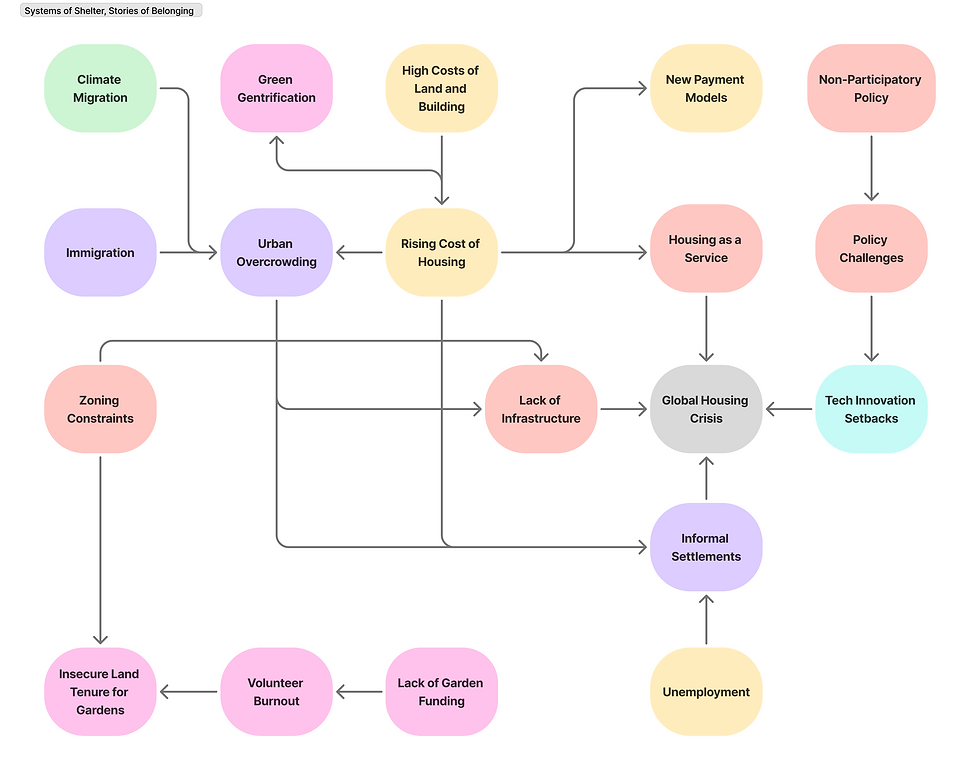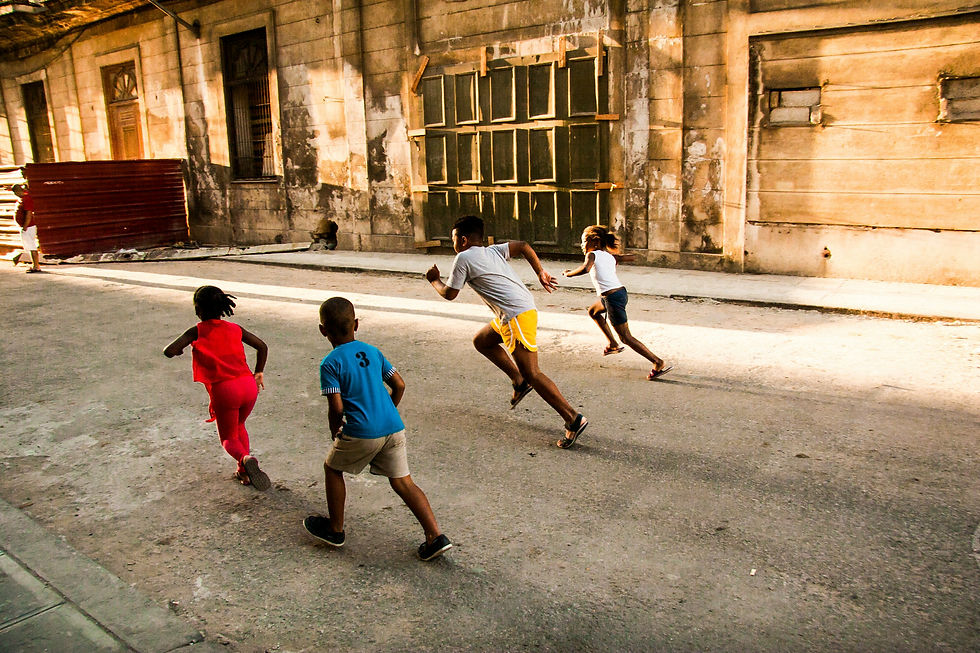From Story to System: Designing Futures that Belong to Everyone
- APF Community
- Sep 8
- 5 min read
By Grace Okubo
The systems that shape our lives – where we live, what we eat, and how we work – are built on the stories we tell about who we are and where we belong. But what if we paid closer attention to crafting stories of the futures we want, and used those stories to design systems that serve us, rather than defaulting to those that don’t?
Over the past two years, I’ve explored some of the pressing challenges cities face around housing and food security. Through this work, I’ve become increasingly convinced that narrative and systems thinking are not only complementary but essential. Together, and in collaboration with the communities most affected, they offer a powerful foundation for building equitable, just, and resilient futures. In this post, I explore how these elements come together and how they make possible futures where everyone belongs.

Stories as Seeds of Change
In my work exploring fiction and narrative foresight, I’ve seen how stories can cut through complexity and invite people into shared reflection. In uncertain and chaotic times, storytelling becomes more than a creative outlet. It’s a strategy for connection, insight, and transformation.
Speculative and science fiction are especially powerful in this regard. They help us stretch beyond inherited assumptions, opening new ways of thinking about belonging, governance, and the values that shape our future. While our brains tend to imagine futures based on past patterns, collaborative storytelling enables us to rewire those defaults, allowing new systems and possibilities to emerge.
Narrative, then, is not just about imagination; it’s a tool for engagement and design. With the right facilitation and grounded context, stories become bridges, linking vision to action and creativity to collective change.
Systems Are Stories We Live In
Systems are driven by narratives that express dominant worldviews. These systems shape how we structure society and distribute resources. For example, the exclusion of informal communities from the foresight process is driven by a worldview that values expert knowledge over lived experiences, just as housing policies are driven by market-centric narratives that treat shelter as an asset, instead of a right.
On the flip side, the rise in community gardening and cohousing trends, especially among minorities and younger generations (millennials and Gen Z), demonstrates how switching narratives, from isolation to community, and ownership to shared access, can inspire new systems driven by equity and sustainability. We must learn to rewrite the underlying stories about who belongs, what is important, and what futures deserve to be built, if we are going to develop new, transformative systems.

Co-creating Futures
Participatory foresight invites people to imagine futures they can see themselves in to build long-term, viable systems that serve their needs. Communities learn to control their own futures when they can relate to the challenges that need to be solved and can connect with them emotionally through traditional media like storytelling and folklore.
Drawing, mapping, and creating speculative artefacts help communities learn “by doing,” allowing them to design the futures they want. Blending Indigenous practices with standard foresight techniques helps promote informed communal decisions and communicate shared scenarios of the future. This way, we ensure that every community, irrespective of class, is empowered to invent and build new systems that can help them achieve the future they want.
Designing Homes for Dignity
Resilient housing requires new systems that weave the technical, social, and emotional stories of the futures we want to build. This extends beyond innovative designs and increased financial access. Housing, at its core, expands the notion of being a physical shelter to include the site where memory is preserved, identity is shaped, and economic survival is negotiated. Sitting at the intersection of multiple systems, land and law, culture and community, infrastructure and imagination, our stories must be aligned to ensure that nobody falls through the cracks and everyone can thrive.
As such, we must integrate technology with local wisdom, financial tools with cultural relevance, and policy with personal narratives. Housing of the future must go beyond being climate-resilient and affordable to express the dignity of those who live in it. With systems thinking, we can trace the ripple effects of decisions among domains, and with storytelling, we can ground the insights gathered in human experience. Systems thinking and storytelling work in synergy to create holistic housing systems for whole people.
Toward Futures of Belonging
To design futures where everyone feels included, we must ask who belongs here and who decides, and then, we need to bring all the important stakeholders to the table. Belonging expands the idea of inclusion to emphasize the feeling of being recognized, rooted, and respected in the systems that shape daily life.
For example, I recently came across the work of Begins With Home, which uses public storytelling campaigns to shift perceptions and policies around housing by humanizing those affected and rallying collective empathy. Their work can be adapted to highlight not only present challenges, but future expectations that inspire hope and action. Systems change is often complex and slow, but centering a feeling of belonging can ensure that we are building emotionally and socially sustainable futures.
There is a lot of layered and unfinished work ahead. Real change is possible if our collaborative imagination drives us and we’re grounded in hope.
Closing Reflection: What’s Next?
When I began this journey, I was focused on a single outcome: affordable housing as a human right. But this process taught me that the future isn’t a destination, it’s a shared terrain shaped by complexity, contradiction, and collective imagination.‘
Real change requires us to think long-term, act with care, and design in collaboration with the community. I leave this series of reflections not with answers, but with a deeper conviction: the future is not a product. Instead, it’s a relationship; one I will continue to nurture through fiction, design, and foresight practice.

References
Foresight for All: Bringing Future Thinking to Informal Communities
Narrative Innovation: The Power of Fiction in Tackling Global Crisis
Resilient, Affordable Housing: Tech, Finance, Policy, Design, Community Integration (Part 2)
Resilient, Affordable Housing: Tech, Finance, Policy, Design, Community Integration (Part 1)
How community gardens can address food sustainability and connection challenges
© Grace Okubo, 2025

Grace Okubo, a visionary founder at Tinkouse Design, blends over a decade of expertise in design and software development, specializing in technology solutions for diverse sectors like Financial Management, E-commerce, and Real Estate. With a fervor for teaching, she has educated over 15,000 students on Coursera in design and product management, boasting an 85% student success rate. Passionate about crafting delightful and inspiring products, she enjoys creating resources to support professional and business growth.









Comments